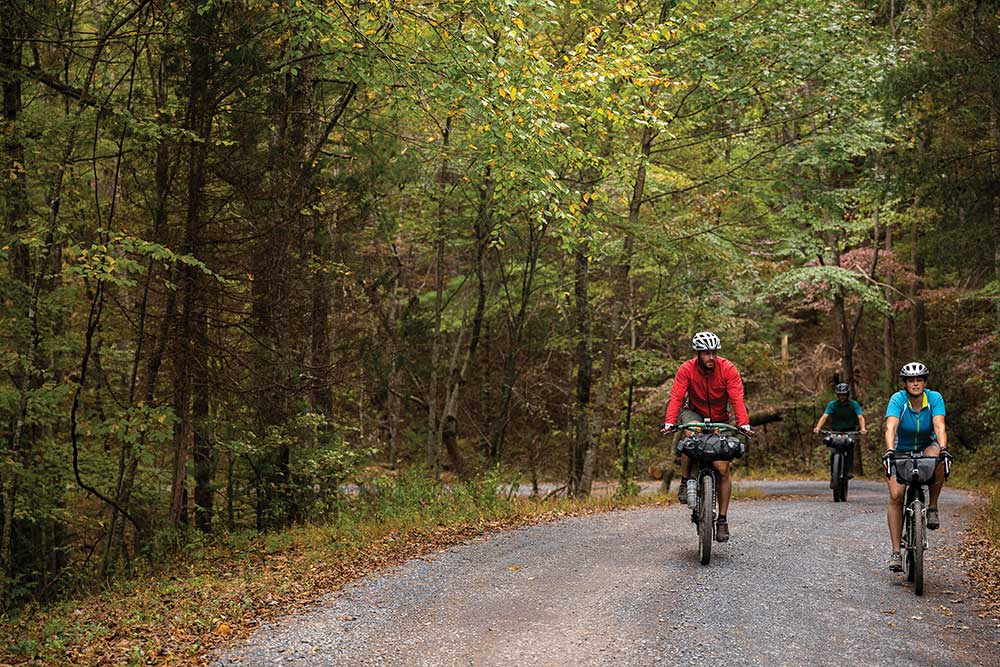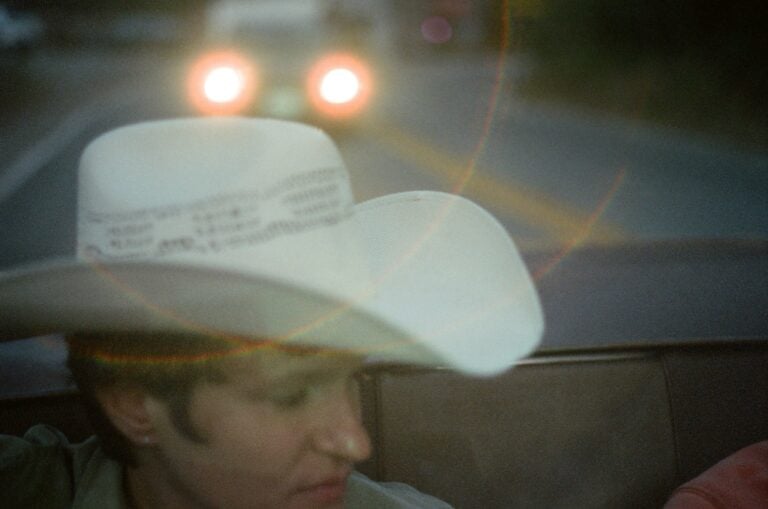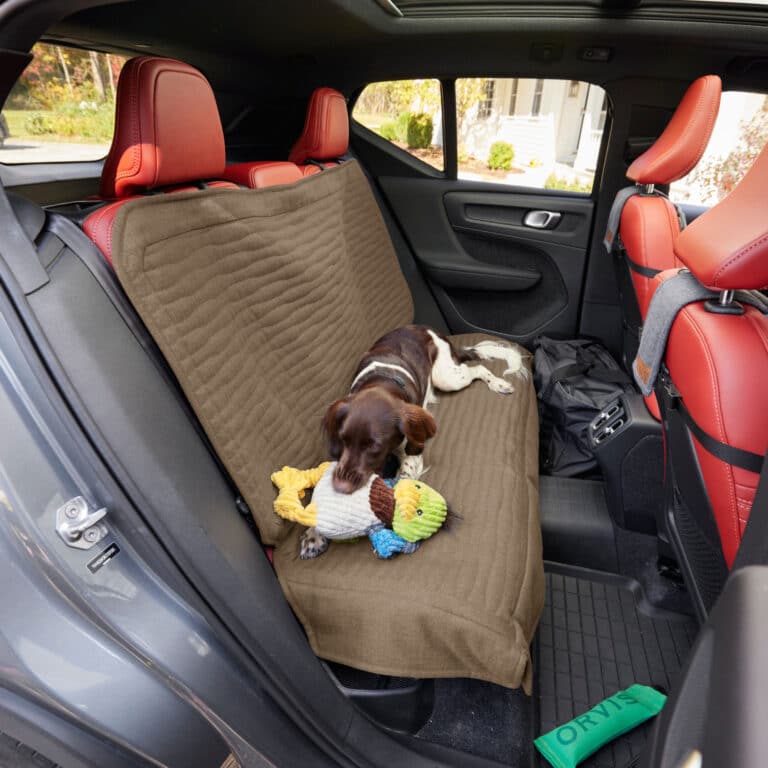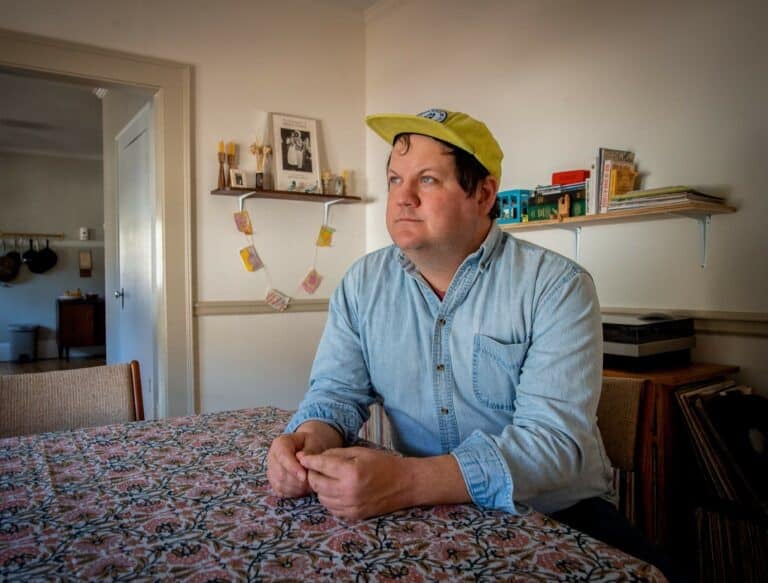Photo by Jess Daddio
The Big South Fork’s Untapped Bikepacking Potential
Driving along the western edge of the Big South Fork National River and Recreation Area, there’s no doubt we’re in horse country. Shards of morning sunlight illuminate wildflower-freckled pastures, and the roadside is dotted with equine-friendly accommodations. There’s even a diner called The Hitching Post. But, the 125,000-acre recreation area spread over northeastern Tennessee and southeastern Kentucky has also emerged as one of the Southeast’s premier mountain biking destinations – thanks in large part to one man, Joe Cross.
I’m with an old friend, Tommy Safranek, a ranger at the Big South Fork for the past three years. Bikes balanced atop my Subaru, we’re headed to meet Cross for the Moonshine Bikepacking Event, a ride he’s organized to showcase the region’s untapped potential.
“Joe is the reason there’s mountain biking in the Big South Fork,” Tommy says as we turn onto Alfred Smith Road, toward the west rim of the 40-mile gorge splicing the recreation area.
A semi-retired pharmacist, trail builder extraordinaire, and founder of the Big South Fork Bike Club, Cross has been championing mountain biking in the region for more than three decades. As a result of his trail stewardship, the Big South Fork was among the first National Park Service units to embrace mountain biking – and the recreation area’s off-road offerings put the region on the map for singletrack seekers more than a decade ago, when options for mountain bikers in national parks were still scarce. In 2012, the International Mountain Bicycling Association (IMBA) recognized five of the Big South Fork’s trails as Epic Rides, making the recreation area the first National Park Service unit to receive the prestigious designation.
The pioneers of mountain biking were known for forging rogue routes, and pirate trails have been etched into landscapes across America, from the White Mountains to the red rock desert of Sedona, Arizona. But, in the Big South Fork, Cross took the opposite approach. He was hooked on mountain biking back in the early days, not long after the sport’s Californian creators first started pedaling the fire roads of Marin County. By the 1980s, Cross was cycling the old logging roads lacing the Big South Fork, and craving more miles to ride. But, instead of blazing illicit routes, he approached the National Park Service and made a deal, promising that if allowed to ride inside the Big South Fork, the local mountain biking community would both build and maintain trails. More than thirty years later, both sides are still keeping up their ends of the bargain. The Big South Fork Bike Club still spends about 250 hours volunteering in the park annually, and Cross himself puts in 150 hours.
We find Cross sifting through rain layers, in a clearing along Alfred Smith Road. With a battery of thunderstorms forecasted, Tommy and I are the only other cyclists for the ride. As darkening clouds furrow overhead, Cross proposes a route linking two of the park’s IMBA Epics. We’ll start on the Grand Gap Loop, then hop on the 40 mile John Muir Trail, featuring a 7.5 mile section designated as an Epic Ride.
I follow Cross along a ribbon of singletrack fringed by mountain laurel, toward the edge of the gorge flanking the Big South Fork of the Cumberland River. The Grand Gap loop is named for a fissure in the precipitous cliffline once used by homesteaders to reach the river, and the circuit is studded with some of the park’s most spectacular overlooks. The upland loop is also splintered with trails for off-road riders. Heading north, the John Muir Trail meets Duncan Hollow Road, where riders can gravel grind toward the Bandy Creek Campground – and the park’s other three IMBA Epics. South of Grand Gap, the John Muir Trail forms part of the 319 mile Sheltowee Trace, a multi-use National Recreation Trail threading the Big South Fork and two neighboring recreation areas, Pickett State Park and the Daniel Boone National Forest.
“By combining all three of the adjacent managed areas, you give yourself a lot of variety,” says Cross. “Don’t just limit your bikepacking to the Big South Fork. Explore the entire region. That’s part of the beauty of our area.”
Cross also recommends the Big South Fork for novice bikepackers. “The IMBA Epic route is easy for newbies,” he says of the 33 mile circuit linking the park’s five epics. “It stays close to Bandy Creek Campground, which provides an easy bail out if your trip goes wrong. That’s a big mental comfort.”
First-time bikepackers don’t even have to camp. Cabins are available at Pickett State Park, and there’s a backcountry inn nestled in the heart of the Big South Fork – Charit Creek Lodge. The property includes structures dating back to 1817, built by long hunter Johnathan Blevins, one of the region’s earliest homesteaders. Although off-grid, the lodge serves family-style meals, keeps a stash of craft beers, and is home to Instagram celebrity Booger Blevins, the resident mutt.
Cross might be partial to the region’s singletrack, but he also touts the offerings for gravel grinders, especially the Rock Creek Area, tucked along the northern edge of the Big South Fork, in the Daniel Boone National Forest. The land belonged to the Stearns Coal & Lumber Company until 1935, and decades of coal and timber extraction left Rock Creek virtually devoid of life. But after targeted restoration efforts, the stream is now both a Blue Ribbon Trout Fishery and a Kentucky Wild River. For gravel aficionados, Divide Road parallels the waterway, skirting Pickett State Park, and intersecting both the John Muir Trail and the Sheltowee Trace.
Near one of Grand Gap’s shadowy rock houses, once a shelter for long-hunters, moonshiners, and traveling Cherokee, Cross calls out for me to stop. There’s a lady slipper beside the trail. Adorned with a bulbous lilac bloom, the rare orchid is flowering, a process that can take 16 years. It’s almost like Cross knew exactly where to find the flower, and I can’t help wondering how many times he’s pedaled this loop. I ask if it’s his favorite trail.
“I have no real favorites,” he admits. “Whichever one I’m riding is my favorite at the time.”








